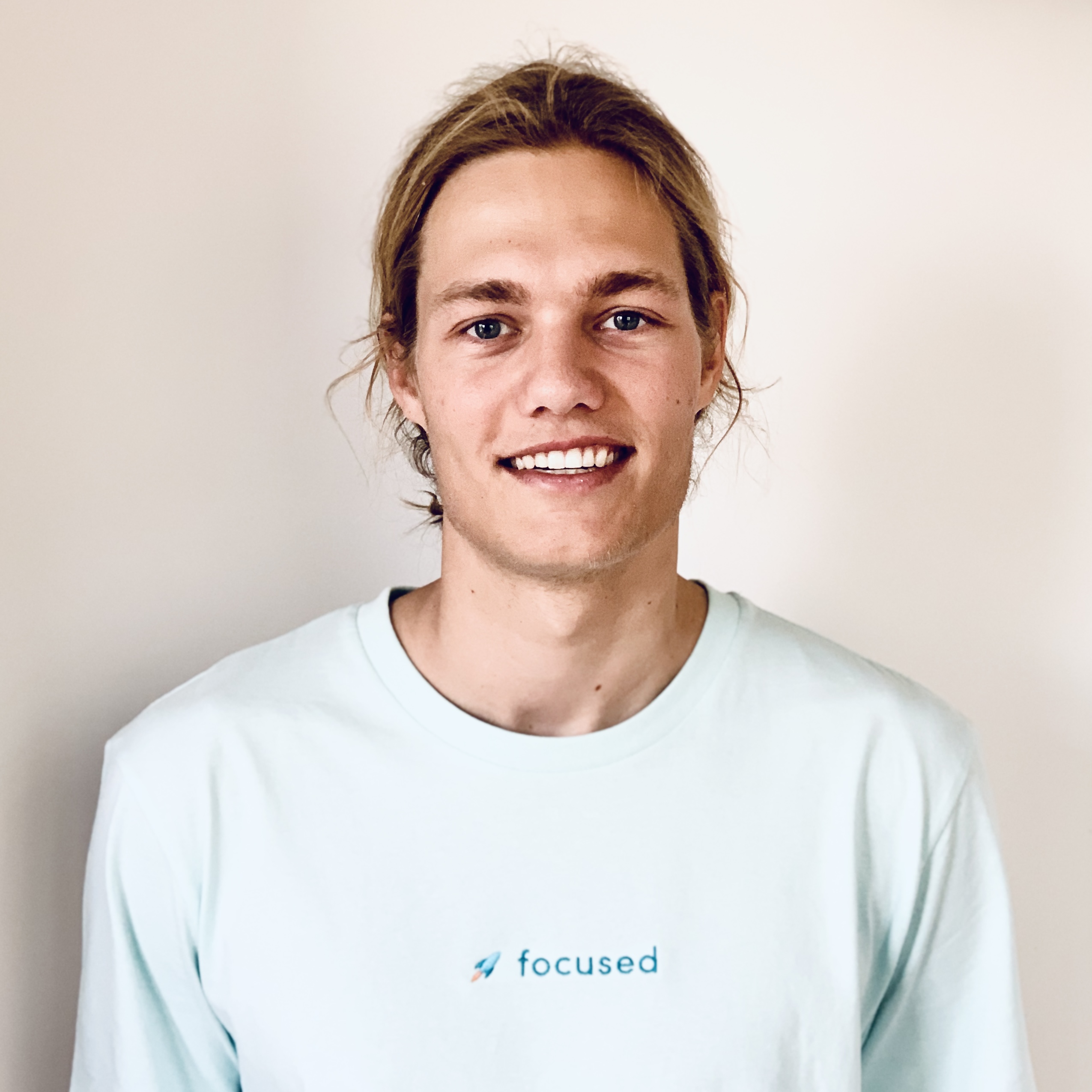Hello?!
Beep! You’ve got a slack message.
Ding! Have you Reddit yet?
In this day and age, we are constantly bombarded by an overwhelming amount of information. And a lot of it comes from social media. It’s a big part of how we work, entertain ourselves, and stay connected with the people in our lives. But sometimes, it can all make you feel a bit overwhelmed. If you’re feeling bogged down by your phone, you might need a social media detox. So let's learn how to do a successful detox.
What is a social media detox or cleanse?
A social media detox is a period of time during which you consciously abstain from using social media. A detox, also sometimes called a social media cleanse, can be as simple as restricting social media for 1 day, all the way up to completely eliminating it for 1 year. For the best results you want to restrict access to as much of your social media as possible. This means blocking access to social media across all your devices, including smartphones, laptops, and tablets.
Why take a social media detox?
If you’re feeling overwhelmed by your devices, you’re using your devices excessively and/or social media is the only thing that can give you any pleasure, it’s a sign that a social media detox could be a good idea.
Your social media can also negatively influence stress levels, loneliness, depression, confidence, cognition and lead you to misinterpret the world around you. As you can see, social media can be quite harmful. That’s why more and more people are turning to social media detoxes to give their brains a much-needed break.
Benefits of taking a social media detox
Taking a social media detox gives you a chance to:
- Clear your mind
- Take back control of your social media habits
- Reclaim free time for better things
- Better understand your mind (and be more mindful, less anxious)
- Find more pleasure in other activities (including work, relationships, chores, exercise)
What happens to your body and brain?
First you need to know a little bit about one very interesting chemical in your brain called Dopamine. Dopamine is a naturally occurring neurotransmitter that our brains use to control motivation, pleasure and other essential brain functions. Highly stimulating activities like scrolling through your social media, eating food, sex, drugs, all cause your dopamine levels to raise temporarily, before dropping to lower levels.
Over time this influences your long-term average dopamine level, which we call the dopamine baseline. When we’re consuming too much social media, like any addictive substance, it lowers this dopamine baseline. And when our dopamine levels are low, we feel unmotivated and starving for more dopamine.
As you first start your social media detox the dopamine levels in your brain drop significantly. On a normal day when you’re not taking a social media detox this drop in dopamine would lead you to go back to your social media and raise your dopamine levels. However, because you’re abstaining from checking your social media, your dopamine levels stay low for a much longer time than usual. Your dopamine levels could be at these low levels for hours or even days, depending on how often you use your social media before you start your detox.
The good news is after the initial challenging part of the detox, where you have low dopamine levels, your dopamine baseline will start to slowly iincrease. Once you have more residual dopamine in your brain you will find normal activities more pleasurable and more motivating.
How to take a social media detox
1. Set a realistic goal
If you’re used to being online all the time, it might not be realistic to expect that you’ll be able to completely unplug for an extended period of time. Instead, start with shorter periods of time, such as just 1 day or a weekend. You can gradually increase the length of your detoxes as you become more comfortable with them. You can also make your detox a lot easier by only abstaining from some of your social apps. Definitely avoid the most addictive social apps, like TikTok and Instagram.
2. Plan how you’ll use your time
Make sure you have a plan for how you’ll occupy your time during your detox. Before you start, it’s helpful to make a list of activities that you can do offline so that you’re not tempted to reach for social media when boredom strikes. My favourites are: reading a book, listening to podcasts and going for a bike ride.
3. Let your friends know about it
Don’t forget to tell your friends and family about your detox so that they know not to expect immediate responses to their messages and posts through social media! Plan to spend time with them offline and let them know the best way to contact you.
4. Delete your social media apps
Now it’s time to delete your social media apps. If you think you’ll be tempted to access your social media using other ways you can also temporarily disable your accounts and set up website blockers for the associated sites. Deleting your apps might seem scary at first but these days social media companies store all of your data on the cloud, so everything will be right there when you’ve decided you want to download the social apps again
5. Carefully download your social apps again
After your detox is over, it’s time to slowly integrate back to life with your socials. This is a great opportunity to setup good habits and safeguards to stop you from over-scrolling and quickly getting overwhelmed again. Unscroll can help you spend significantly less time on your social media feeds. We also have these easy, effective tips which can help you reduce screen time.
Other tips for a successful detox
Should I quit social media cold turkey?
Quitting completely and suddenly is difficult and might not be quite as effective as a detox strategy with a little more planning involved. I suggest trying to detox for a few days before you commit to quitting for good.
How do I break social media addiction?
Addictions are a serious psychological condition. If you think you have a serious addiction to your social media, and it’s severely impacting other areas of your life, you may need to get personalised help from a psychology professional.
However, it is very common to feel like you’re addicted to social media. If you have a strong habit of overconsuming your social media, a detox might not be as effective as simply taking steps to REDUCE your screen time and loosen your screen time habits.
How often should I take a social media detox?
It’s completely up to you to decide when you should take a social media detox, so I suggest to listen in to your body for clues for when you’re feeling overwhelmed by your phone and social media.
How to deal with FOMO
When taking a detox it’s common to feel like you’re missing out on hearing what other people are doing. I like to reframe the way I think about it: I’m fully focused on enjoying my own life, so I’m not missing out on any enjoyment. Being present is much more rewarding compared to watching what other people get up to. People who spend all day scrolling through social media are the ones who are really missing out.
How long does social media withdrawal last?
You may experience a withdrawal and strong urges to check social media, lasting anywhere between hours or days after you start your social media detox.
Alternatives to social media detoxes
Even if you wanted to, you probably couldn’t live a ‘normal’ life going without a phone or social for the rest of your life. As distracting as social media can be it does have its benefits. For young people like me, it’s almost a necessity to have social media in order to fully participate in society.
If you can find a way to consume social media in a healthier way then you can get all the benefits of social media while minimising the negative consequences. This is a much more sustainable, long-term strategy than taking constant social media detoxes. Plus you won’t have the inconvenience of having to periodically take social media detoxes to restore balance.
This can be difficult, but generally it’s a good idea to limit the number of times you check your social media throughout the day. We have a lot of effective tips HERE. Keep in mind that you can have an influence on the number of times you check social media, but once you’re inside a social media’s app you’re at the mercy of their algorithm — it becomes very difficult to consume content mindfully and in a time-friendly way. That’s where an all-in-one safe social media feed app like UNSCROLL can make life a lot easier.
How to take a Instagram break
Maybe instead of doing a full social media detox you only want to take a break from Instagram. Taking a break is a simple process but one that many people get wrong:
- Decide how long you want to take a break for
- Delete the Instagram app
- Set up a website blocker for Instagram in your laptop and mobile browsers
- Only access Instagram once the break is over
How to take a TikTok break
Being the social media with the most addictive content, it’s a very good idea to take regular breaks from TikTok. The process is very similar to the process with Instagram:
- Decide on your break length
- Delete the TikTok app
- Set up a website blocker for TikTok in your browsers
- Only access TikTok once the break is over
Social media detox challenge
Now it’s up to you. Do you want to see what it’s like to take a detox from social media? Don’t keep waiting. It doesn’t have to be super difficult. I challenge you to try this and I promise you'll see some results quickly.
Easy 1 day social media detox challenge: Delete all your social media apps off your phone and don’t access them for 24 hours.
Good luck :)






